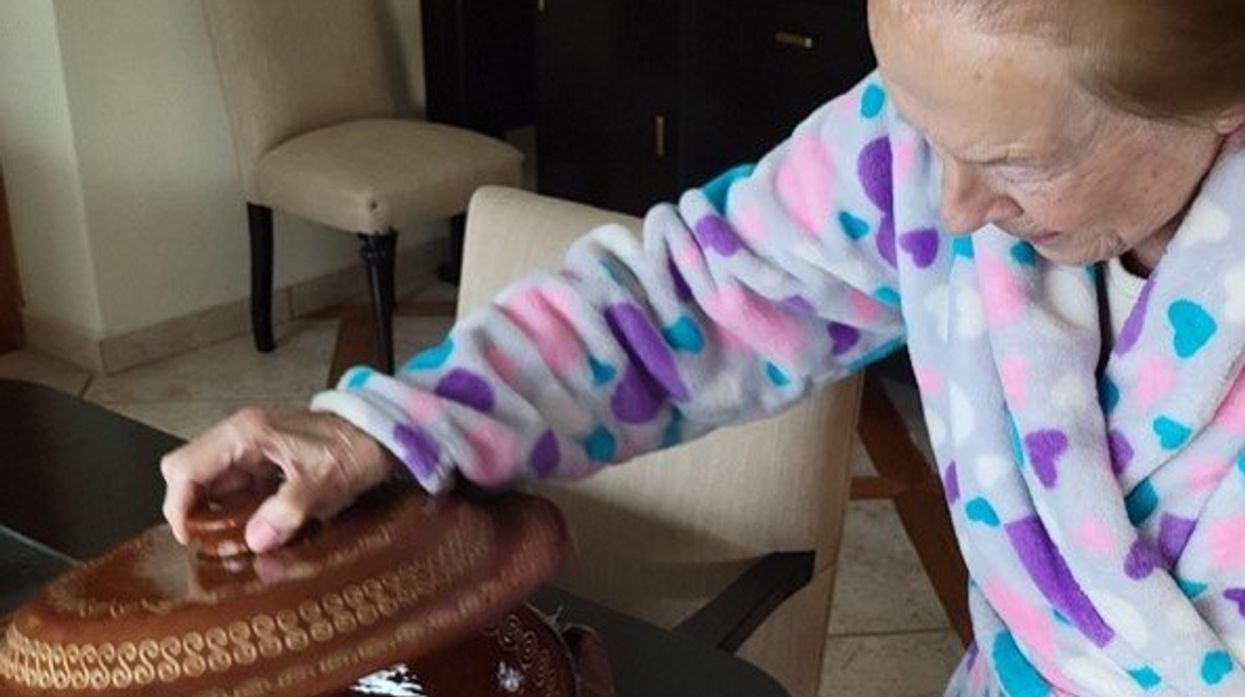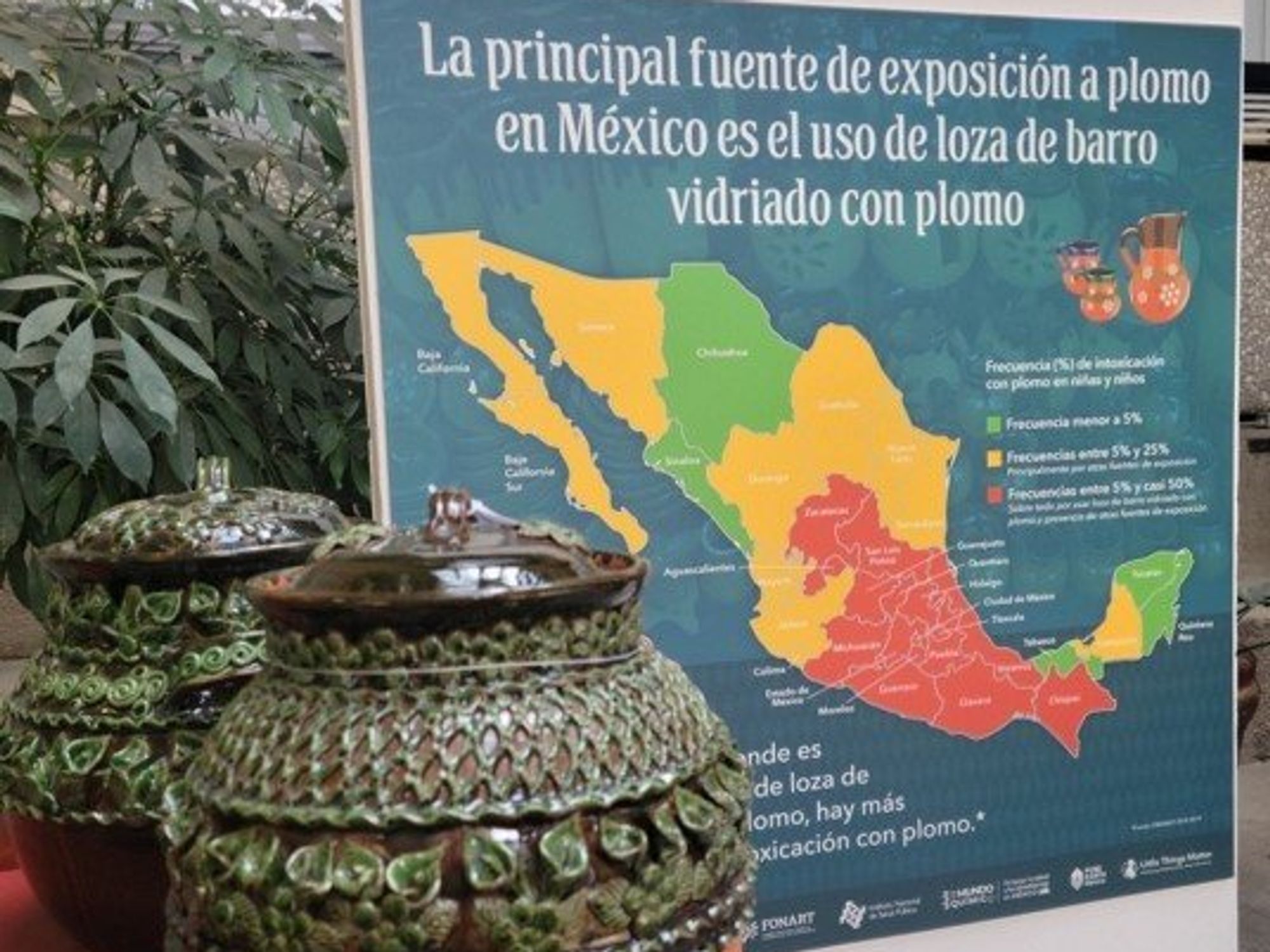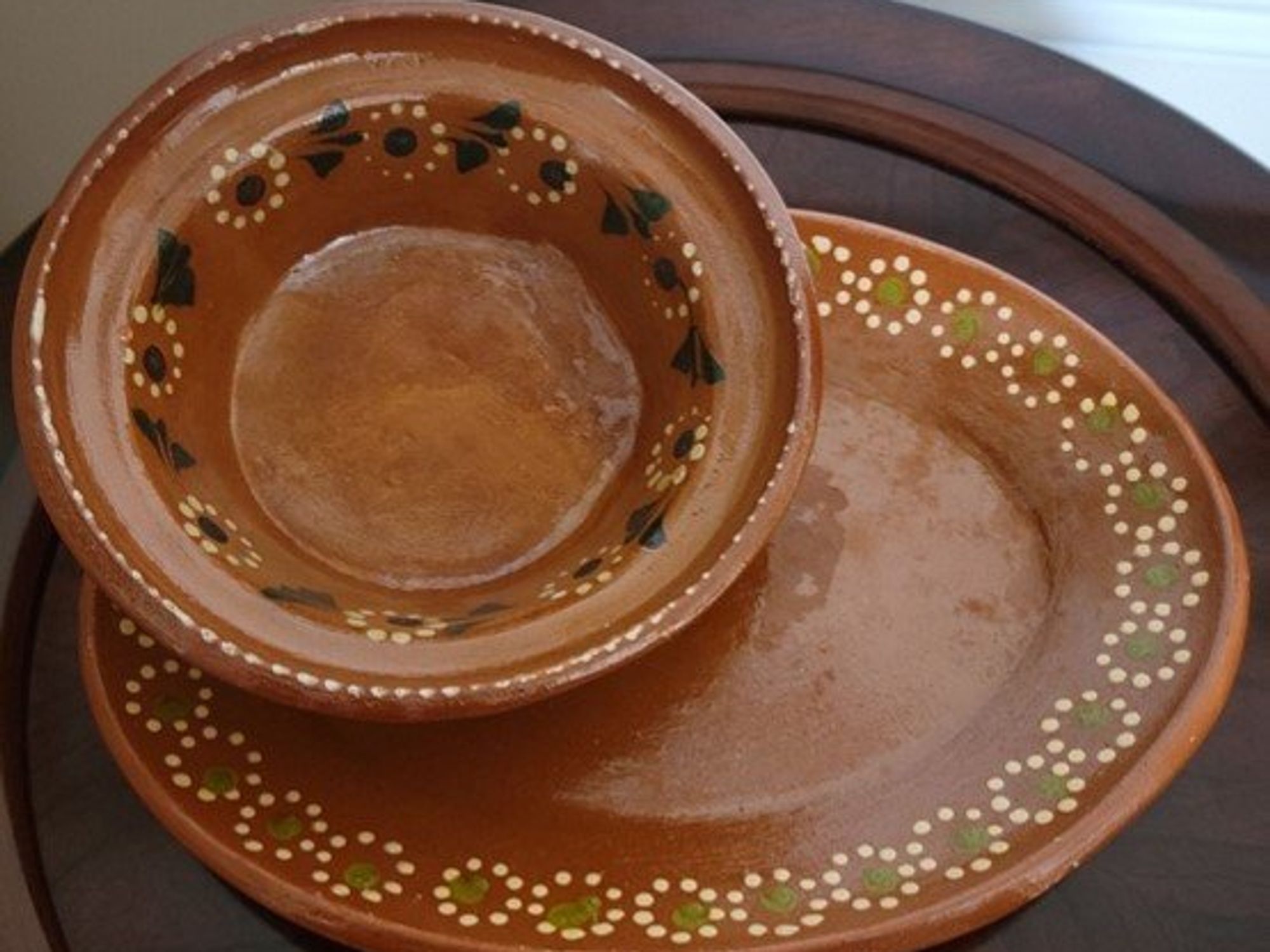
Every Mexican Independence Day, Día de Muertos and Christmas, my grandmother would lovingly prepare classic dishes like Pozole and Romeritos using her prized glazed clay pottery.
As a child, these meals were the highlight of my year — flavors immersed in tradition, memories carved into each plate. The kitchen alive with the aroma of spices, the laughter of family echoing through the air and the clay pottery, glowing under a soft light, holding the essence of our heritage. It was a scene straight out of a book. But little did I know within those beautiful pots lay a silent intruder into our culinary traditions and bloodstreams, casting a shadow over our most cherished moments.
To read a version of this story in Spanish click here. Haz clic aquí para leer este reportaje en español.
Despite seven years as a practicing physician, I’d remained oblivious to this danger in our kitchens well into adulthood. The revelation came after I left the medical field and became a toxicology student in the U.S., when I realized that Mexicans were unwittingly exposed to lead through this beloved tradition, as the brain-damaging metal lurked in many of these clay pots, leaching into our food and drinks.
It was a personal awakening to insidious environmental harms and the health profession’s inadequate training and response to them.
Cultural traditions hold deep meaning in our lives, often forming the backbone of our heritage and identity. However, when cherished practices pose hidden health risks, such as lead exposure from traditional glazed clay pottery, the conflict between preserving culture and ensuring safety emerges. Despite well-documented dangers of lead, this practice persists in many Mexican households, partly due to a lack of awareness and insufficient intervention from the medical community. My journey of discovering this danger highlights the urgent need for better environmental health education among healthcare professionals and underscores the importance of finding solutions that safeguard both our traditions and our health.
Awakening to the importance of environmental health
Lead exposure can have severe health consequences, especially for children. Lead is a known neurotoxin, which means it damages the brain. Even at low levels of exposure it can affect children’s brain development, reduce IQ scores, cause attention disorders and violent and aggressive behaviors. Lead exposure can also cause anemia, hypertension, kidney, heart and reproductive damage. There is no safe level of exposure to lead, according to the World Health Organization.
Cultural traditions hold deep meaning in our lives, often forming the backbone of our heritage and identity. However, when cherished practices pose hidden health risks, such as lead exposure from traditional glazed clay pottery, the conflict between preserving culture and ensuring safety emerges.
I couldn’t shake the image of my grandmother’s Pozole, a dish that symbolized love and heritage, now tainted by the very pots that gave it life. Discarding my grandmother’s pottery felt like betraying our culture. It shouldn’t be this way—we shouldn’t have to sacrifice our traditions for safety. Thus began my journey of introspection and advocacy, fueled by the desire to protect our traditions while safeguarding our health.
Returning to school after practicing as a physician for years in Mexico was daunting. Many considered it foolish. But amidst the skepticism and self-doubt, there was a glimmer of clarity: the more I understood the impact of the environment on health, the more my years in the medical field made sense. I treated countless patients with diseases that could have been prevented, but my lack of education in environmental health did not let me see that. This oversight remains widespread, as nursing and medical schools in Mexico have yet to incorporate any environmental health training. As one of my medical school professors used to say: “The eyes do not see what the mind does not know.” How can we expect healthcare professionals to be aware of these dangers if they were never taught to recognize or identify them?
The neglected danger hidden in pottery

One of the hardest things about immigrating to a different country is remembering the things you can no longer do. For me, it was the weekends. Back in Mexico, I could visit my grandparents just down the road and enjoy a meal with them or with the whole family. The memories of being able to talk to my cousins about their lives and seeing my nephews grow up while enjoying my grandma’s cooking were what kept me going. Every time I thought about those moments, the same image of glazed clay pottery came to my head.
The lead in traditional glazed clay pottery is a practice passed down from Spanish communities. Although Spain eliminated this practice in the 18th century, in Mexico it remains deeply embedded in the artisanal pottery tradition, with an estimate of 70,000 pottery workers in the country. A recent study showed that other countries in Latin America, Africa and Southeast Asia seem to have a similar problem of lead in ceramic cookware.
Returning to school after practicing as a physician for years in Mexico was daunting. Many considered it foolish. But amidst the skepticism and self-doubt, there was a glimmer of clarity: the more I understood the impact of the environment on health, the more my years in the medical field made sense.
Due to the traditional process, most ovens in pottery workers’ workshops are open and cannot reach the high temperatures needed to prevent lead from leaching into food and drinks. But even for those pottery workers who have closed ovens, they still expose themselves and their families to the toxic while working with the lead-containing glaze.
This health threat is particularly strong for the most marginalized populations. While my family reserved the use of glazed clay pottery for special occasions, millions of Mexicans rely on these dishes for daily cooking. This reliance is especially pronounced among communities facing economic hardships or belonging to Indigenous populations. Unfortunately, the very areas where these communities reside often overlap with regions where polluting industries are concentrated, compounding the environmental injustices and pollution they face.
In an ideal world, every Mexican should be able to enjoy their cherished dishes using their favorite pottery. So how do you solve an issue that affects the lives of millions of Mexicans while encouraging them to keep their traditions?
Acting against lead

In 2019, I joined the Mundo Químico collaborative, a group of Mexican scientists and professionals committed to the development of environmental health policies and programs in the country. Lead exposure in Mexico often remains invisible to policymakers, resulting in scarce funding and neglect from the government. The insidious nature of environmental health issues makes them difficult to detect, especially for those not directly affected. Consequently, governmental initiatives are lacking, perpetuating the cycle of disregard. This invisibility undermines efforts to combat lead exposure and exacerbates the environmental injustices faced by marginalized communities. As a result, the last National Survey of Health and Nutrition in Mexico, found that around 17% of children between the ages of 1 and 4 have lead poisoning.
In response to this issue, Mundo Químico has been collaborating since 2019 with various governmental entities to teach artisans how to produce the same beautiful pottery using a different, lead-free glaze, as well as developing a stamp for those lead-free products. This aims to preserve the cultural heritage while ensuring the safety and health of both the artisans and the consumers.
Our greatest challenge is still how invisible these issues are for policymakers and the general public. The health effects often manifest over years, making it difficult for people to connect them to pollution sources—a daunting task, even for medical professionals. This ignorance gives polluting industries an unfair advantage.
Governmental initiatives are lacking, perpetuating the cycle of disregard. This invisibility undermines efforts to combat lead exposure and exacerbates the environmental injustices faced by marginalized communities.
For too long, Mexico has neglected to protect its people from chemical exposures. This needs to stop. We need comprehensive solutions that prioritize the health and well-being of every Mexican. We need to train healthcare professionals in environmental health to prevent oversights like the ones I made, inadvertently misdiagnosing patients exposed to common contaminants. We need stronger programs and stricter policies to eliminate lead-containing glaze from our cultural practices. It’s time to shift from policies favoring industry interests over public health to measures that prioritize the safety of individuals and communities while safeguarding our traditions. Through these concerted efforts, we can pave the way for a healthier future, where cultural traditions and well-being harmoniously coexist.
Nearly a decade since leaving clinical practice, I still face questions about my choice. Yet, this journey has affirmed my purpose. While I may not treat diseases directly, my advocacy has the power to shed light on environmental justice issues affecting millions of Mexicans. The fight is far from over, but I hold onto the belief that with perseverance and collaboration, we can create a future where tradition and health thrive hand in hand.
Six months ago, I returned home and visited my grandma. Despite her memory not being as sharp and her struggle to walk, her face lit up with joy at seeing me. During this visit, I purchased lead-free pottery from the pottery workers we have been collaborating with, thus returning a cherished tradition to my family. It was a moment of triumph—a small step towards a larger goal. Every single Mexican should have the opportunity to do the exact same thing for their family and I will work tirelessly until this dream becomes a reality.
This essay was produced through the Agents of Change in Environmental Justice fellowship, a partnership between Environmental Health News and Columbia University’s Mailman School of Public Health. Agents of Change empowers emerging leaders from historically excluded backgrounds in science and academia to reimagine solutions for a just and healthy planet.




